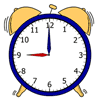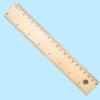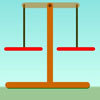Skip over navigation
Have a look at the sets of four quantities below. Can you rank them in order from smallest to largest?
To help you decide, you may need to find extra information or carry out some experiments.
Can you convince us that your order is right?



Or search by topic
Number and algebra
Geometry and measure
Probability and statistics
Working mathematically
Advanced mathematics
For younger learners
Order, Order!
Age 5 to 11
Challenge Level 





- Problem
- Getting Started
- Student Solutions
- Teachers' Resources
Order, Order!
Have a look at the sets of four quantities below. Can you rank them in order from smallest to largest?
To help you decide, you may need to find extra information or carry out some experiments.
Can you convince us that your order is right?
 |
Time
Taken to travel to school
For mustard and cress to grow from seeds
Taken to eat a biscuit
Between your 6th and 7th birthdays
|
 |
Distance
You could jump up in the air
You can kick a football
You can run in half a minute
Length of a ladybird
|
 |
Mass
Of a blown-up balloon
Of a bar of chocolate
Of a loaf of bread
Of your teacher
|
Why do this problem?
This activity offers an opportunity to combine skills from mathematics and science. Learners are required to make estimates, understand and use appropriate units, and find information to draw conclusions.
This problem highlights the fact that in science it is rather hard to calculate anything without making some sort of assumptions. Good science will clearly state and be aware of these assumptions; bad science will ignore them. This idea is likely to come up informally as the children talk to each other, and you can draw attention to examples that they themselves bring up.
Possible approach
Give each pair or group of children a copy of these cards. Each card has one of the statements on it along with a picture. The picture will help those who cannot read so well remember the content. Invite the pupils to put the four time cards in front of them to
start with and ask them to order the cards in their pairs/groups. At this stage, make it clear that it doesn't matter if they are unsure. Have a brief discussion about their thoughts and then have a go at the distance and mass statements in a similar way.
Then, allocate one of the sets of cards (i.e. time, distance or mass) to each pair or group. The aim now is for each pair/group to come up with an order for the quantities they have been given, together with a convincing presentation of evidence to justify their order. Allow pupils access to reference materials, measuring equipment, and anything else that might be useful, and give them
plenty of time for research and experiment.
Once they have finished, take each set of quantities and invite the different groups to present their rankings and reasoning. Ask the rest of the class to judge the different presentations on the strength of the evidence they have offered.
Key questions
Do you have an idea of what order they might go in?
What could you do to find out how long/how far/how heavy that is?
Possible extension
Some children might like to have a go at a similar problem In Order, which demands more clarity about the assumptions they are making.Possible support
Reassure learners that there are often no exact values (so no "wrong" answers), and their task is simply to find some evidence to convince others of the order. Encourage them to experiment, and offer some guidance on how to search for suitable data.You may also like
Triangle Animals
How many different ways can you find to join three equilateral triangles together? Can you convince us that you have found them all?
Triple Cubes
This challenge involves eight three-cube models made from interlocking cubes. Investigate different ways of putting the models together then compare your constructions.
The Add and Take-away Path
Two children made up a game as they walked along the garden paths. Can you find out their scores? Can you find some paths of your own?

